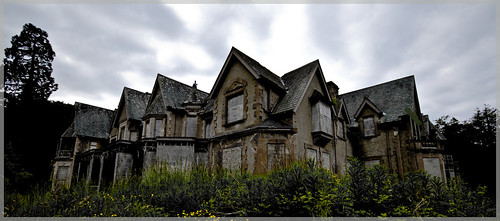
EDITED EXTRACTS FROM THE TOPOGRAPHICAL DICTIONARY OF IRELAND, 1837
BENBURB, a small village, in the parish of Clonfeacle, barony of Dungannon, County Tyrone.
The first notice of this place under its present name occurs during the rebellion of Hugh O'Neill, Earl of Tyrone, when the Lord Deputy of Ireland, Thomas Burgh (c1558-97), crossed the River Blackwater at Beann Borb, at the head of the English forces, in June, 1597; and being seized with a sickness of which he died a few days later at Newry, was succeeded in the command of the army by Henry FitzGerald, Earl of Kildare, between whom and the Earl of Tyrone a severe engagement took place, in which the English were defeated, the Earl of Kildare mortally wounded, and his two foster brothers slain.
Many of the English were killed in battle, and numbers perished in the river.
Sir Henry Bagenal, with 4,500 foot and 400 horse, marched against the Earl of Tyrone's army, with which he had a severe conflict; many of the English cavalry were dreadfully mangled by falling into pits dug by the enemy and covered with branches of trees; but after surmounting these and other obstacles, Bagenal made a vigorous attack upon the right wing of the Irish army commanded by the Earl himself, and on the left under O'Donnell of Tyrconnell.
A dreadful carnage ensued [Battle of the Yellow Ford], the two armies being wholly engaged; but just when victory seemed to incline towards the English forces, Bagenal was shot by a musket ball in the forehead and fell dead on the field.
The English, thrown into confusion by the loss of their leader, were defeated, and in their retreat to Armagh, many were trodden down by the Irish cavalry.
This triumph of the Earl of Tyrone was but of short duration; the Lord Deputy, Mountjoy, defeated him in several battles, and had driven him back to the camp at Beann Borb, where, on the 15th July, 1601, a battle was fought, in which Tyrone was totally defeated and his army compelled to retreat in confusion to his chief fortress at Dungannon.
 |
| Benburb Castle, by J H Burgess (c1810-90), (Armagh County Museum) |
ON the plantation of Ulster, Sir Robert Wingfield received from JAMES I a grant of 1,000 acres of land at Benburb; and previously to the year 1619 he had erected a castle on these lands, built the present church, and founded the village, which at that time contained 20 houses.
This new establishment continued to flourish till the breaking out of the war in 1641, when the castle was surprised by Sir Phelim O'Neill on the night of the 22nd October, and the whole of the inmates put to death.
On the 5th June, 1646, this place became the scene of a battle [Battle of Benburb] between O'Neill and General Monro; the former, with a large body of men, took up a position between two hills, with a wood in his rear and the river Blackwater, at that time difficult to pass, on his right.
Monro, with 6,000 foot and 800 horse, marched from Armagh and approached by the opposite bank of the river, where, finding a ford, now called Battleford Bridge, he crossed and advanced to meet O'Neill.
Both armies were drawn up in order of battle, but instead of coming to a general engagement, the day was spent in skirmishing, till the sun, which had been favourable to the English, was declining, when, just as Monro was beginning to retreat, he was attacked by the Irish, who made a furious onset.
An English regiment commanded by Lord Blayney, fought with undaunted resolution till they were cut to pieces and their leader slain; the Scottish horse next gave way, and the infantry being thrown into disorder, a general rout ensued.
More than 3,000 of the British forces were slain, and their artillery and stores taken, while, on the part of O'Neill, not more than 70 were killed.
The castle was soon after dismantled, and has ever since remained in ruins; it was the largest in the county, and, though weakly built, occupies a remarkably strong position on the summit of a limestone rock rising perpendicularly from the river Blackwater to the height of 120 feet.
IN the village is a small ancient outpost strongly built and probably forming an entrance to the castle, which on every other side was defended by natural barriers.
Near the village are Tullydowey, the seat of T Eyre Jackson; and Castle Cottage, of Captain Cranfield.
There were formerly extensive bleach greens near the village, and the mills and engines are still remaining; but the principal part of the business is carried out at Tullydowey, where large quantities of linen are finished for the English markets; the weaving of linen is also carried on to some extent.
The Ulster Canal passes on the eastern side of the river and village, and is here carried through a hill of limestone, which has been excavated to the depth of 80 feet, and is conducted longitudinally over the mill-race by an aqueduct of considerable length.
A court is held on the first Friday of every month for the manor of Benburb, which extends over 47 townlands and comprises 9,210 acres.
The parish church is situated close to the village, in which is also a place of worship for Presbyterians.
The ruins of the castle are extensive and highly picturesque; and near the walls was found a signet ring bearing the arms and initials of Turlough O'Neill.
The O'Neills had a stronghold here of greater antiquity than the castle erected by Sir Robert Wingfield.


























